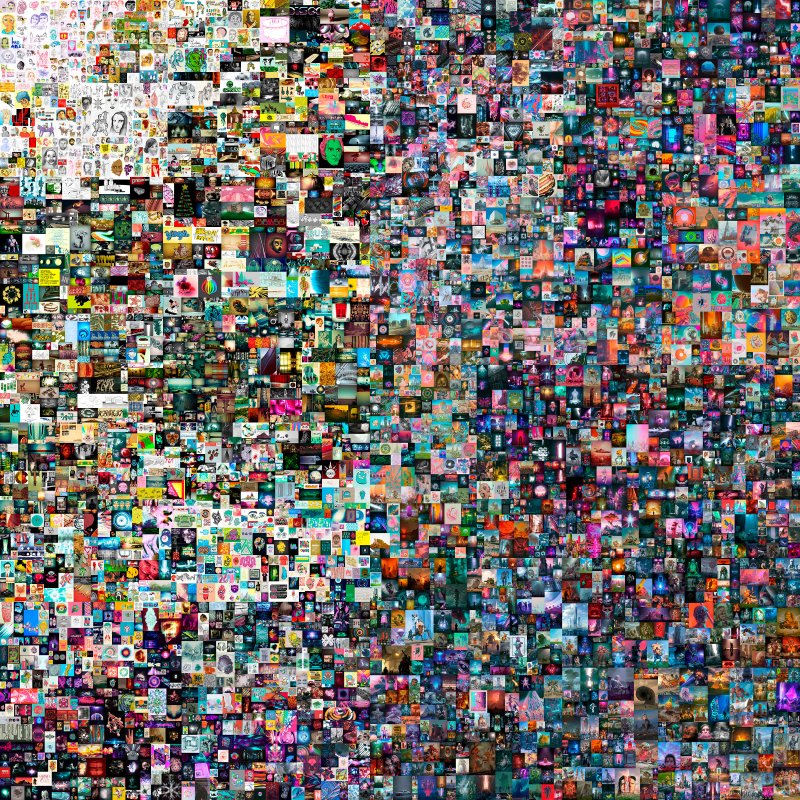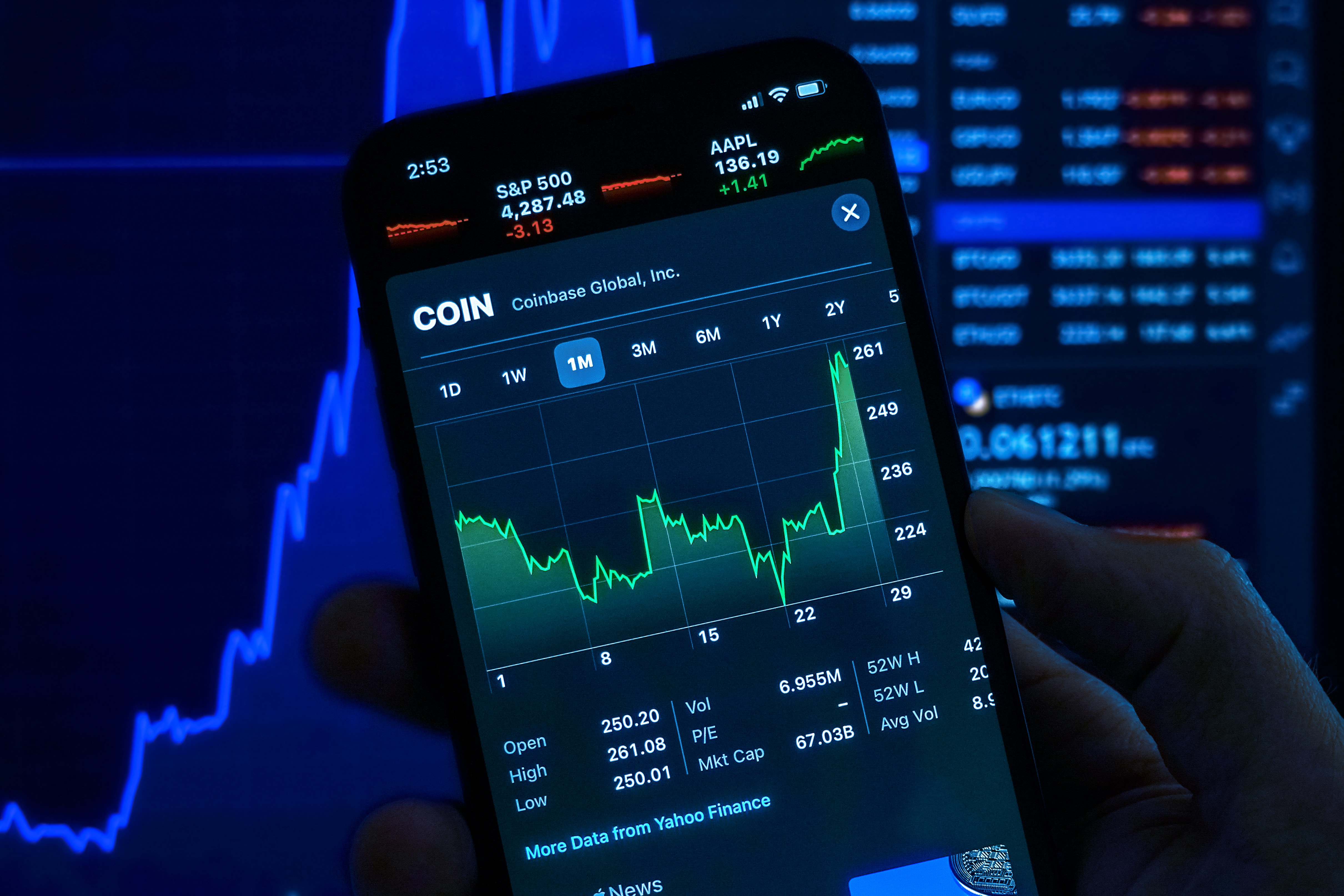What exactly is an NFT?
NFT stands for ‘non-fungible token’ and can be best understood as a unique and easily verifiable digital file, coming with proof of ownership and authenticity (‘non-fungible’ means that each piece is one of kind and cannot be exchanged for another asset of the same value).
NFTs exist on a blockchain and are digital assets such as digital artworks, tweets, doodles, JPEGs, and GIFs, that can be owned, sold, or traded for another NFT.
While NFTs have arguably existed since 2014, they have been gaining an increasing amount of attention in the art world. Several celebrities have tried their hand at selling them, including Snoop Dogg, Paris Hilton, Ellen DeGeneres, and Grimes. By the first half of 2021, they became a trend that eventually had Christie’s and Sotheby’s host their first NFT auctions, and last March, founder of Twitter Jack Dorsey sold his first-ever tweet as an NFT for $2.9 million, making it obvious that anything on the Internet of value could be an NFT.

According to DappRadar and TradingPlatforms, NFT sales passed the $4 billion mark in the last month. The sales volume totaled $24.9 billion in 2021, compared to just $94.9 million the year before.

A digital image that is a mosaic of 5000 digital artworks by American digital artist, Mike Winklemann, also famously known as Beeple was sold as an NFT for $69.3 million.
What is it about NFTs being sold for millions?
For over a decade, digital artists have been showcasing their art on digital platforms, accessible and available freely. With everything out in the open, exclusivity and authenticity become a luxury. NFTs provide just that.
The digital art business is worth millions of dollars and NFTs add the element of ‘scarcity.’ This explains why collectors and enthusiasts are willing to pay in six figures to claim ownership of an authentic art piece. It’s almost like owning the original painting of “The Starry Night” (maybe not exactly like it, but close).
According to a 2021 tech report by Cornell University, upon purchasing an NFT token, the owner is entitled to the following properties:
Verifiability: The NFT with its token metadata and its ownership can be publicly verified.
Transparent execution: The activities of NFTs include minting, selling, and purchasing and are all accessible publicly.
Availability: All the tokens and issued NFTs are always available to sell and buy.
Tamper-resistance: The NFT metadata and its trading records are persistently stored and cannot be manipulated once the transactions are deemed as confirmed.
Usability: Every NFT has the most up-to-date ownership information, which is user-friendly and information-clearly.
Atomicity: Trading NFTs can be completed in one atomic, consistent, isolated, and durable (ACID) transaction. The NFTs can run in the same shared execution state.
Tradability: Every NFT and its corresponding products can be arbitrarily traded and exchanged.
While it’s true that the image is on the Internet and can simply be downloaded directly, NFT enthusiasts say owning a piece of code in a blockchain is of incredible value to them. Moreover, collectors in the NFT community will not consider downloaded images as the original.
Where can you buy NFTs?
There are certain steps one should keep in mind before buying NFTs, the very first being creating a digital wallet. Once that’s sorted, enthusiasts need to buy some sort of cryptocurrency. Ethereum is the most accepted form of crypto by NFT sellers.
There are several platforms that allow NFTs purchases such as Rarible, Opensea.io, or Foundation. There, you can bid on an NFT and wait for the auction to end to find out if you won the bid or not.
Announcing Series C! We’re building the friendliest & most trusted NFT marketplace with the best selection across many chains. The funding helps us accelerate product development, improve trust & safety, and invest deeply in the web3 community & ecosystem. https://t.co/OmRPleMCOX
— OpenSea (@opensea) January 5, 2022
Finally, what do NFTs mean for the digital artists of the world?
The stories about NFTs fetching millions of dollars have prompted a lot of crypto amateurs to take the plunge. As explained, it’s an entirely new digital asset that offers ownership, on a verified blockchain.
But can NFTs become the next evolution of digital art?
The Cornell University study decodes how crypto collectibles have increased the value of museum images and digitized collections significantly. Since the process of buying and selling NFTs is transparent, it builds a reliable financial foundation for artists to kickstart their career in selling art online. The study also points out how new business models can be explored to generate revenue for galleries, libraries, and museums.
Justin Sun, a Hong Kong-based crypto entrepreneur and art collector, told the Washington Post that NFTs will bring “transparency into the art world.” Unlike the commercial gallery business model, NFTs allow artists to trade art directly online. Traditional methods require artists to mediate with art dealers or specialists thus, profit is distributed. Anybody can buy an NFT, and its prices are listed on public records. Every time an NFT is re-sold, its creator also makes a profit – a system missing from the physical art world, where artists often feel as if they have been shafted when their work is resold on the secondary market. The process of buying art becomes less tedious and more transparent.
Artists of all kinds – authors, musicians, filmmakers – are envisioning a future in which NFTs are transforming both their creative process and how the world values art. In a quote to TIME Magazine, 20-year-old digital artist Jazmine Boykins said, “You will have so many people from different backgrounds and genres coming in to share their art, connect with people, and potentially build a career. Artists put so much of their time—and themselves—into their work. To see them compensated on an appropriate scale, it’s really comforting.”
While technology critics might look at NFT as the next evolution in the world of art, it comes with its share of drawbacks. The production of these NFTs costs a lot of money, which could prevent some creators from joining in on the action. Legal experts question how copyright laws might be revised, in times when some digital artists create NFTs out of existing art in the physical world, without the permission of the original artists.
On the other hand, NFTs are a source of environmental concerns. Creating NFTs requires an enormous amount of raw computing power. French artist Joanie Lemercier calculated how generating six NFT pieces consumed more electricity than his entire physical studio did in two years. Although energy-efficient NFTs already exist, the majority of NFTs are still being traded on the Ethereum blockchain, whose energy consumption is substantial.
In the end, artists need to ask themselves what they expect from this advancement. The NFT craze is making it clear that artists from different backgrounds and cultures are coming together, putting their stories out for auction. But the real question still remains: is there a meaningful difference between physical artwork and a digital asset? If so, will all enthusiasts start collecting art in the form of NFTs?






